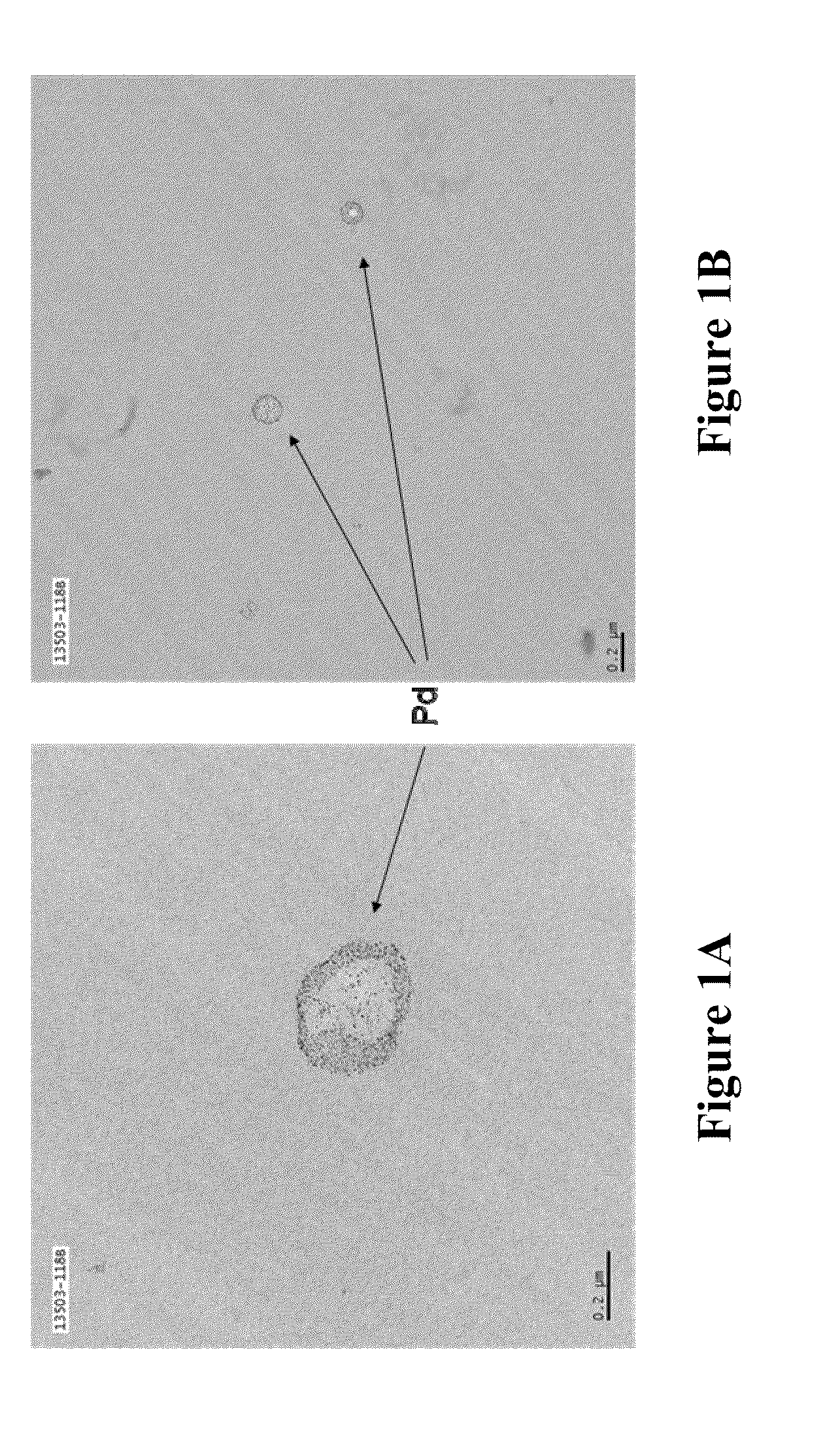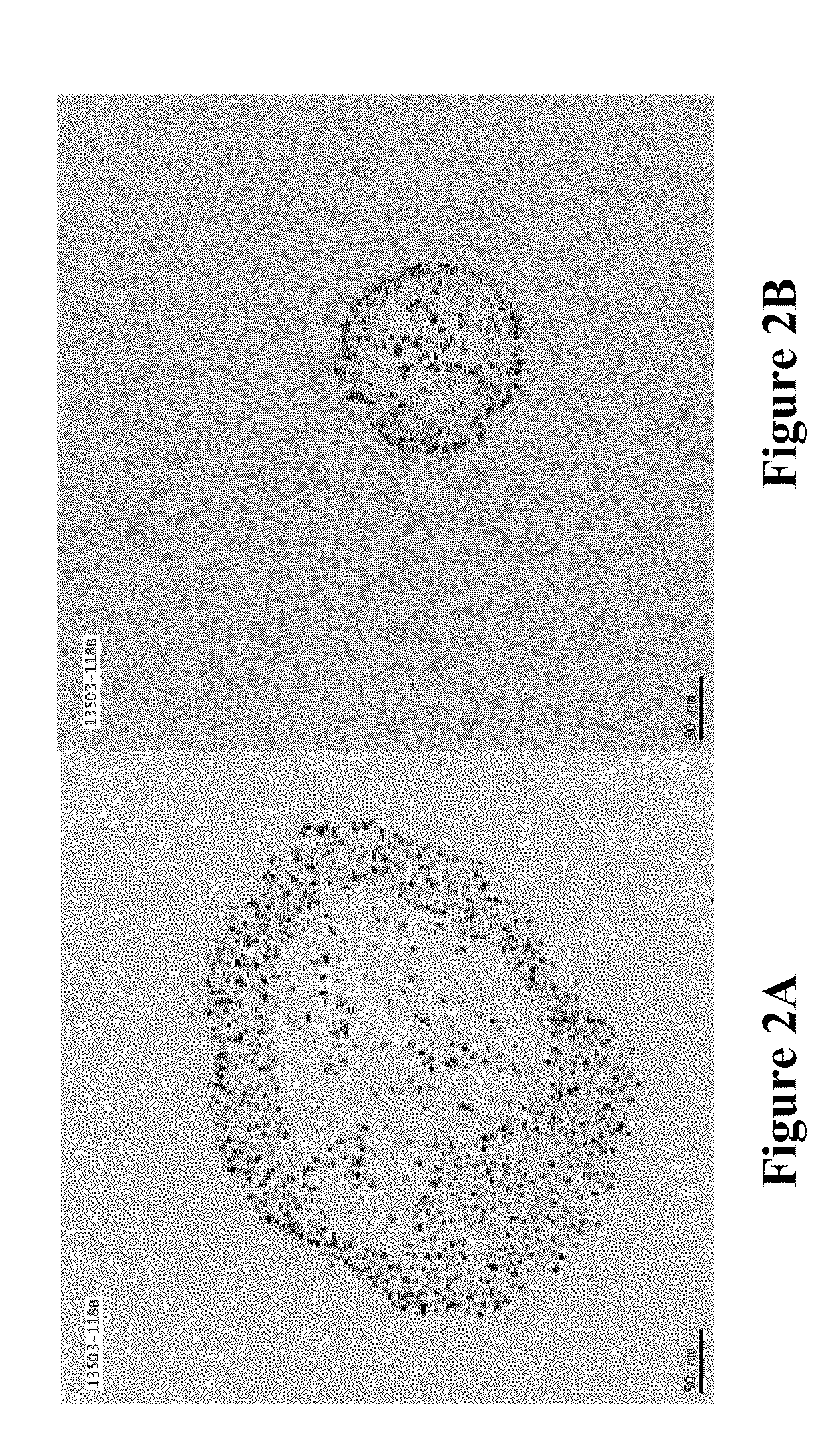Soluble metal salts for use as conductivity promoters
a technology of conductivity promoters and metal salts, which is applied in the direction of non-metal conductors, conductors, oxide conductors, etc., can solve the problems of adversely affecting the conductivity itself, insufficient conductivity of compositions containing these conductive fillers, and insufficient conductivity of many compositions, etc., to increase the conductivity of thermoset resins
- Summary
- Abstract
- Description
- Claims
- Application Information
AI Technical Summary
Benefits of technology
Problems solved by technology
Method used
Image
Examples
example 1
Preparation of Isooctadecyl Mono-Itaconate (Compound A-1):
[0067]A single neck, 250 ml flask was charged with 12.33 g (0.11 mole) itaconic anhydride, and 27.0 g (0.10 mole) isooctadecyl alcohol. The flask was rotated in a water bath set at 65° C. The mix appeared initially as a slurry of the solid itaconic anhydride in the alcohol. It was transformed to a hazy homogeneous liquid within the first three hours of mixing. The heating was continued for 16.5 hours. The product was then dissolved in 100 ml octane and this solution was passed over 10.5 g silica gel. The octane was removed on a rotary evaporator (vacuum followed by sparge with clean dry air) to yield 36.0 g (94.2% of theory) of the acid-ester as a clear, light-yellow, viscous liquid. An FTIR spectrum of compound demonstrated prominent absorptions at 2951, 1738, 1698, 1634, 1467, 1364, 1156, 1006, 954, and 826 wavenumbers.
example 2
Preparation of Neopentyl Mono-Itaconate (Compound A-3):
[0068]A 125 ml, single-neck flask was charged with 22.4 g (0.20 mole) itaconic anhydride and 20.2 g (0.23 mole) neopentanol. This mixture was heated and stirred at 85° C. for four hours the excess neopentanol was then sparged out of the mixture to yield 37.3 g (93.4% of theory) of what was at first a clear liquid. The compound transformed to a white waxy solid upon sitting at room temperature. An FTIR was performed on this compound and it was found to have prominent absorptions at 2959, 1728, 1703, 1637, 1318, 1190, and 1162 wavenumbers.
example 3
Preparation of Isooctadecyl Mono-Maleate (Compound A-2):
[0069]A 250 ml, one-neck flask was charged with 27.0 g (0.10) mole isooctadecyl alcohol and 12.0 g (0.122 mole) maleic anhydride. This mix was stirred overnight at 60° C. overnight. The product was then dissolved in 100 ml toluene and the solution was filtered over 10 g silica gel. The residual volatiles were removed via sparging to yield 35.16 g (96.4% of theory) of a colorless viscous liquid. An FTIR was performed on this compound and it was found to have prominent absorptions at 2953, 1732, 1709, 1634, 1166, and 820 wavenumbers.
PUM
| Property | Measurement | Unit |
|---|---|---|
| temperature | aaaaa | aaaaa |
| temperature | aaaaa | aaaaa |
| temperatures | aaaaa | aaaaa |
Abstract
Description
Claims
Application Information
 Login to View More
Login to View More - R&D
- Intellectual Property
- Life Sciences
- Materials
- Tech Scout
- Unparalleled Data Quality
- Higher Quality Content
- 60% Fewer Hallucinations
Browse by: Latest US Patents, China's latest patents, Technical Efficacy Thesaurus, Application Domain, Technology Topic, Popular Technical Reports.
© 2025 PatSnap. All rights reserved.Legal|Privacy policy|Modern Slavery Act Transparency Statement|Sitemap|About US| Contact US: help@patsnap.com



